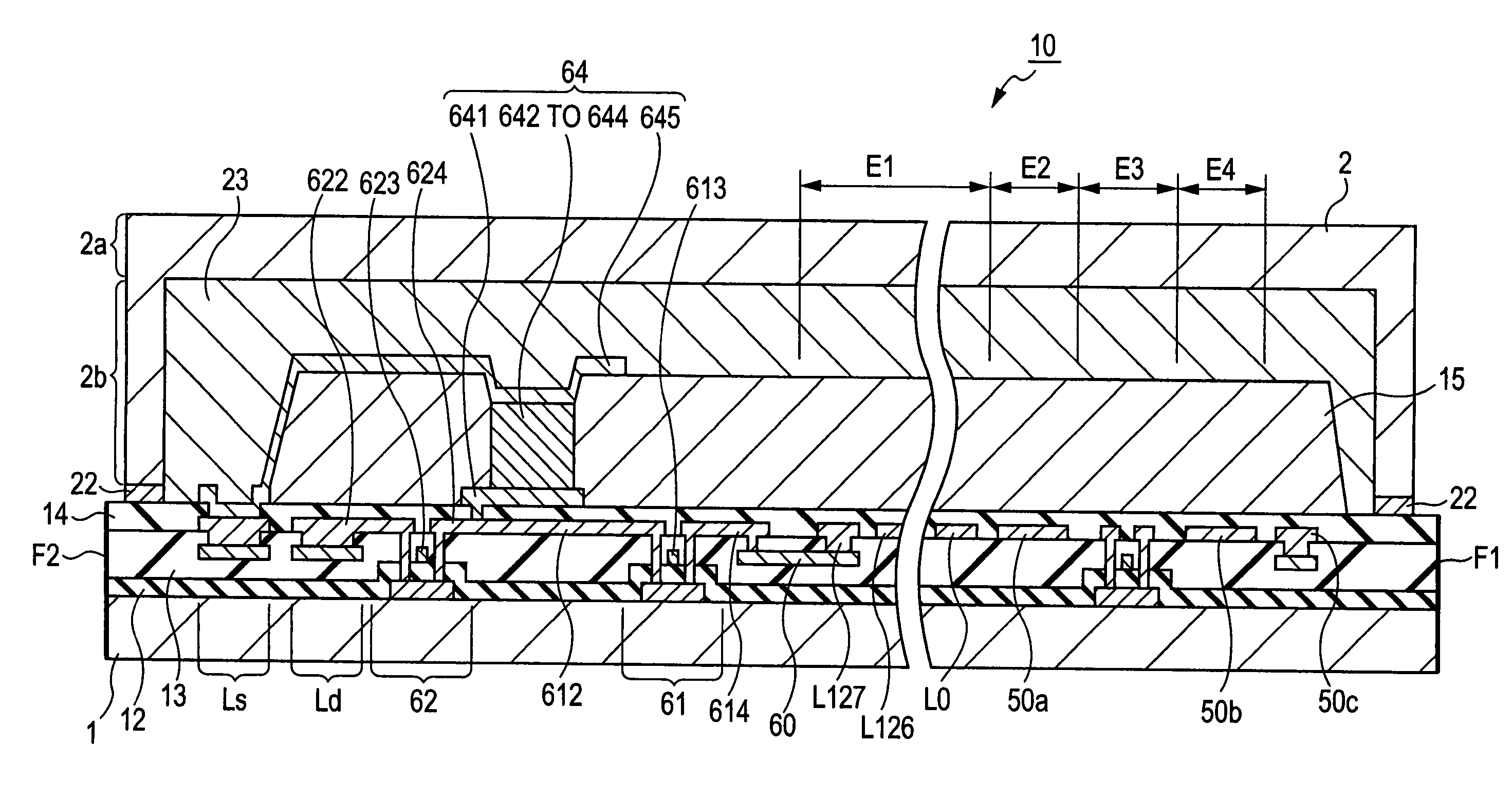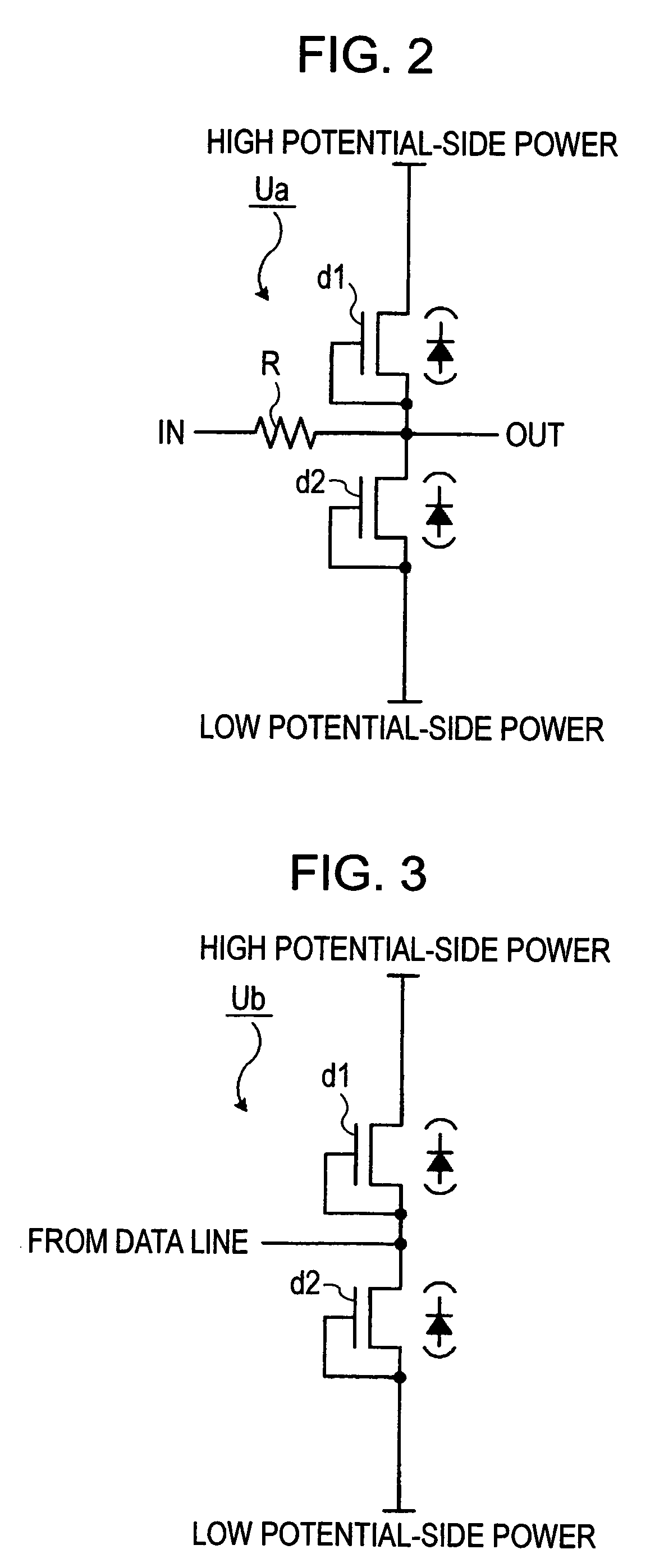Light-emitting device, image forming apparatus, and display apparatus
a technology of light-emitting devices and image forming devices, which is applied in the direction of static indicating devices, discharge tubes luminescnet screens, instruments, etc., can solve the problems of reducing the brightness of the oled element, difficult to write a voltage signal into the data line at high speed, and producing stray capacitance between, so as to reduce power consumption and prevent brightness from being lowered. , the effect of reducing the stray capacitan
- Summary
- Abstract
- Description
- Claims
- Application Information
AI Technical Summary
Benefits of technology
Problems solved by technology
Method used
Image
Examples
Embodiment Construction
[0043]Hereinafter, exemplary embodiments of the present invention will be described with reference to the accompanying drawings.
Light-Emitting Device
[0044]FIG. 1 is a block diagram illustrating the configuration of a light-emitting device according to an embodiment of the invention. The light-emitting device is used as a head unit 10 of an image forming apparatus, such as a printer. The head unit 10 is a line-type optical head and includes an input protection circuit 20, a buffer unit 30, 128 data lines L0 to L127, an output protection circuit 40, a shift register 50, and a plurality of pixel blocks B1 to B40. The head unit 10 is supplied with various control signals and power signals in addition to data signals D0 to D127, and the input protection circuit 20 includes a plurality of input ESD protection units Ua arranged on wiring lines for supplying the control signals, and a plurality of inter-power protection unit Ua′ arranged between a plurality of power supplies for supplying p...
PUM
 Login to View More
Login to View More Abstract
Description
Claims
Application Information
 Login to View More
Login to View More - R&D
- Intellectual Property
- Life Sciences
- Materials
- Tech Scout
- Unparalleled Data Quality
- Higher Quality Content
- 60% Fewer Hallucinations
Browse by: Latest US Patents, China's latest patents, Technical Efficacy Thesaurus, Application Domain, Technology Topic, Popular Technical Reports.
© 2025 PatSnap. All rights reserved.Legal|Privacy policy|Modern Slavery Act Transparency Statement|Sitemap|About US| Contact US: help@patsnap.com



